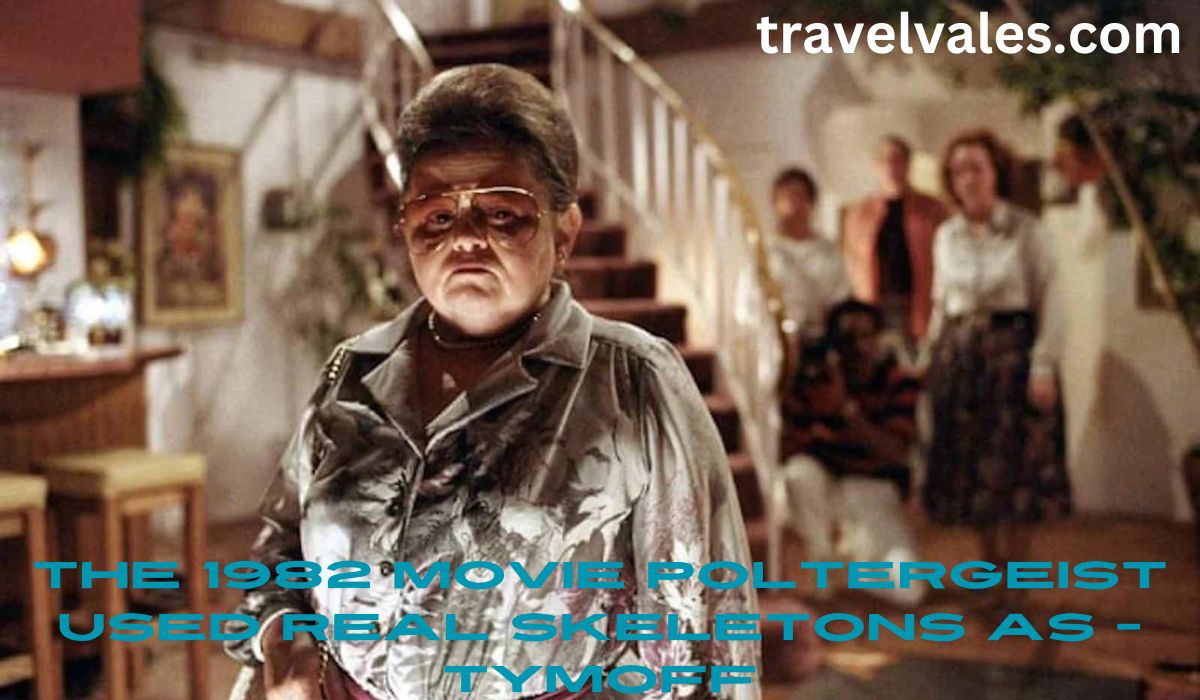Introduction to The 1982 Movie Poltergeist Used Real Skeletons
The 1982 Movie Poltergeist Used Real Skeletons remains a significant milestone in the horror film genre. Directed by Tobe Hooper and produced by Steven Spielberg, this film is known for its eerie storyline, groundbreaking special effects, and the infamous rumor that real skeletons were used during its production. This article delves deeply into this controversial topic, exploring the reasons behind the use of real skeletons, the impact on the cast and crew, and the legacy of this decision.
The Controversial Use of Real Skeletons
Background of the Movie
Poltergeist tells the story of the Freeling family, who experience supernatural occurrences in their home. The film’s intense scenes and terrifying plot have made it a classic in the horror genre. However, one particular aspect has overshadowed its cinematic achievements: the use of real human skeletons.
Why Real Skeletons Were Used
During the making of Poltergeist, the production team opted to use real human skeletons instead of plastic ones. This decision was primarily due to cost and realism. At the time, real skeletons were cheaper than high-quality plastic ones. Additionally, real skeletons provided a level of authenticity that enhanced the horror elements of the film.
How the Skeletons Were Used
The most notable scene involving real skeletons occurs towards the end of the film when the family’s home is flooded, and skeletons emerge from the muddy water. Actress JoBeth Williams, who played the role of Diane Freeling, later revealed that she was unaware she was working with real skeletons during the filming of these scenes.
Impact on the Cast and Crew
The Cast’s Reactions
When the truth about the skeletons came to light, many cast members were understandably shocked and disturbed. JoBeth Williams, in particular, expressed her discomfort upon learning that the skeletons were real. She had spent a considerable amount of time in close proximity to these remains, which added an eerie layer to her experience on set.
The Curse of Poltergeist
The revelation about the skeletons has contributed to the so-called “Poltergeist curse.” Several tragic events and untimely deaths have been associated with the cast and crew of the Poltergeist franchise, leading some to believe that the use of real skeletons brought a curse upon those involved.
Notable Incidents:
- Heather O’Rourke’s Death: The young actress who played Carol Anne Freeling died at the age of 12 due to complications from a medical condition.
- Dominique Dunne’s Murder: The actress who played Dana Freeling was murdered by her ex-boyfriend shortly after the release of the film.
- Other Tragic Events: Several other cast and crew members experienced untimely deaths or severe misfortunes, further fueling the belief in the curse.
The Ethics of Using Real Skeletons
Ethical Considerations
The use of real human remains in film raises significant ethical questions. While the practice was not uncommon at the time, it is now considered highly unethical and disrespectful to the deceased. The individuals whose remains were used likely did not consent to their bones being utilized for entertainment purposes.
Changes in Industry Standards
Since the production of Poltergeist, industry standards have changed considerably. The use of real human remains is now strictly regulated, and filmmakers typically use high-quality replicas or CGI to achieve the desired effects without resorting to unethical practices.
The Legacy of the Skeleton Controversy
Influence on Horror Films
The skeleton controversy has had a lasting impact on the horror film industry. It has prompted filmmakers to consider the ethical implications of their choices more carefully and has set a precedent for the use of special effects and props in a respectful manner.
Ongoing Fascination
The story of Poltergeist and its use of real skeletons continues to fascinate and horrify audiences. It serves as a grim reminder of the lengths to which filmmakers sometimes go to achieve realism and the unintended consequences of such decisions.
Educational Value
This controversy also offers educational value, providing a case study in ethics for film students and professionals. It highlights the importance of considering the moral implications of production choices and the potential long-term effects on those involved.
YOU MAY ALSO LIKE: Halo (2003) Game Icons and Banners: A Comprehensive Guide
Conclusion
The use of real skeletons in the 1982 movie Poltergeist is a chilling chapter in film history. While it contributed to the film’s realistic horror, it also brought about significant ethical concerns and fueled the belief in a curse surrounding the movie. This article has explored the reasons behind this decision, its impact on the cast and crew, and the lasting legacy of the controversy. As we continue to appreciate Poltergeist for its contribution to the horror genre, it is crucial to remember the lessons learned from this dark aspect of its production.
FAQs
1. Did the cast know about the real skeletons during filming?
- Most cast members, including JoBeth Williams, were unaware that the skeletons used in the film were real.
2. Why were real skeletons used instead of plastic ones?
- Real skeletons were used because they were cheaper and provided a more realistic appearance than plastic skeletons available at the time.
3. What is the “Poltergeist curse”?
- The “Poltergeist curse” refers to a series of tragic events and untimely deaths associated with the cast and crew of the Poltergeist franchise, which some believe are linked to the use of real skeletons in the film.
4. Are real skeletons still used in movies today?
- No, the use of real skeletons in movies is now considered highly unethical and is strictly regulated. Modern filmmakers use high-quality replicas or CGI instead.
5. What lessons have been learned from this controversy?
- The controversy has highlighted the importance of ethical considerations in filmmaking and has set a precedent for the respectful use of special effects and props in the industry.
Key Takeaways
- The use of real skeletons in Poltergeist was driven by cost and realism.
- The cast and crew were deeply affected by the revelation of this practice.
- The controversy has had a lasting impact on the horror film industry and ethical standards in filmmaking.
- The story of Poltergeist serves as an important case study in film ethics.










